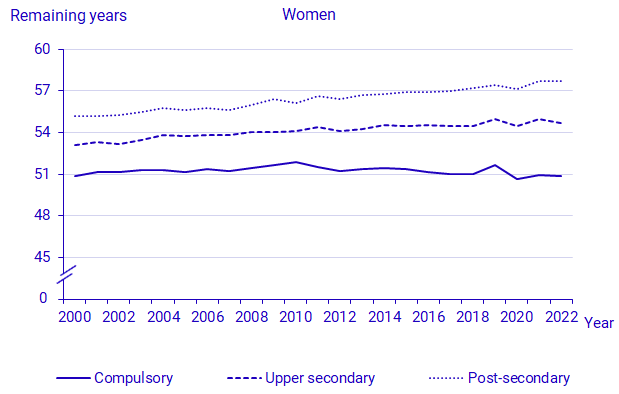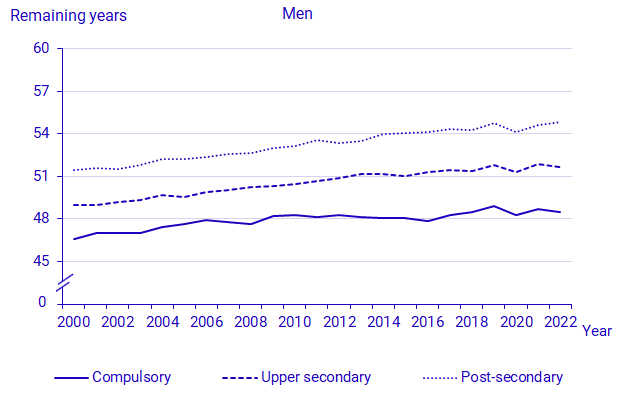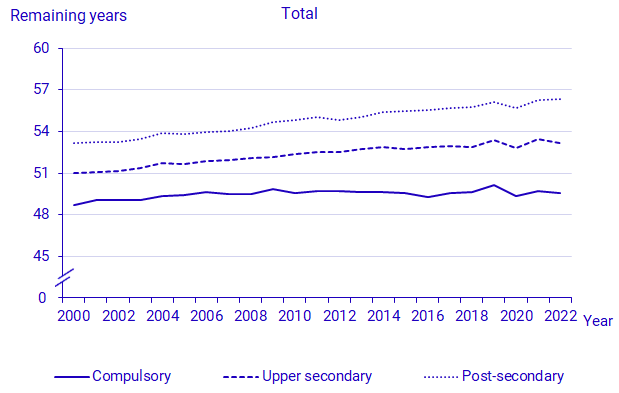Life expectancy at age 30 by educational attainement 2000-2022



Comments
Throughout the period 2000–2022, remaining life expectancy at 30 years has been highest for the group of persons with post-secondary education and lowest for the group of persons with only compulsory education. The group of persons with upper secondary education lay between these two groups. In 2022, remaining life expectancy was 6.9 years higher for women with post-secondary education than for women with only compulsory education, 57.7 years compared to 50.8 years. For men, the difference between these two groups in the number of remaining years of life expectancy was 6.3 years, 54.8 years compared to 48.5 years. The difference between those with post-secondary education and those with upper secondary education was 3.1 years för women and 3.2 years för men. Persons with upper secondary education had a life expectancy that was 3.8 years (for women) and 3.2 years (for men) higher than for those with compulsory education.
The number of years of remaining life expectancy at 30 years increased for all groups between 2000 and 2019. The drop in life expectancy in 2020, due to high mortality from covid-19, led to somewhat lower life expectancy in 2020 than in 2000 for women with compulsory education, but between 2020 and 2021 life expectancy clearly increased for all groups. The increase was greatest for women with post-secondary education and for men with upper secondary education, 0.6 years, and smallest for women with compulsory education, 0.3 years. Between 2021 and 2022 remaining life expectancy at age 30 decreased for all women, especially for those with upper secondary education, 0.3 years. The decrease can also be seen among men with compulsory and upper secondary education, 0.2 years. The only group that had an increased remaining life expectancy were men with post-secondary education, 0.2 years. The development for the entire period 2000 to 2022 shows that changes has differed between groups. The largest increase, 3.4 years, was among men with post-secondary education, from 51.4 years to 54.8 years. For women with post-secondary education the increase was 2.5 years. For women with compulsory education, remaining life expectancy in 2022 was at the same level as that in 2000.
The calculation on remaining life expectancy by level of education only includes persons born in Sweden. Data on level of education is often not available for foreign born persons, which is why they have been excluded from this statistic in the graphs. The calculation of life expectancy is smoothed for death risks in the highest ages, 90 years and older, for 2000–2009, and 99 years and older for 2010–2011. The smoothing in 2000–2011 means that all groups of education are allotted the same death risk as women and men born in Sweden in total in the country as from the various high ages. The reason for this smoothing is that the level of education is not available for anyone born in Sweden before 1911. As from 2012, the same calculation is used as in the official statistics for women and men in total in Sweden.